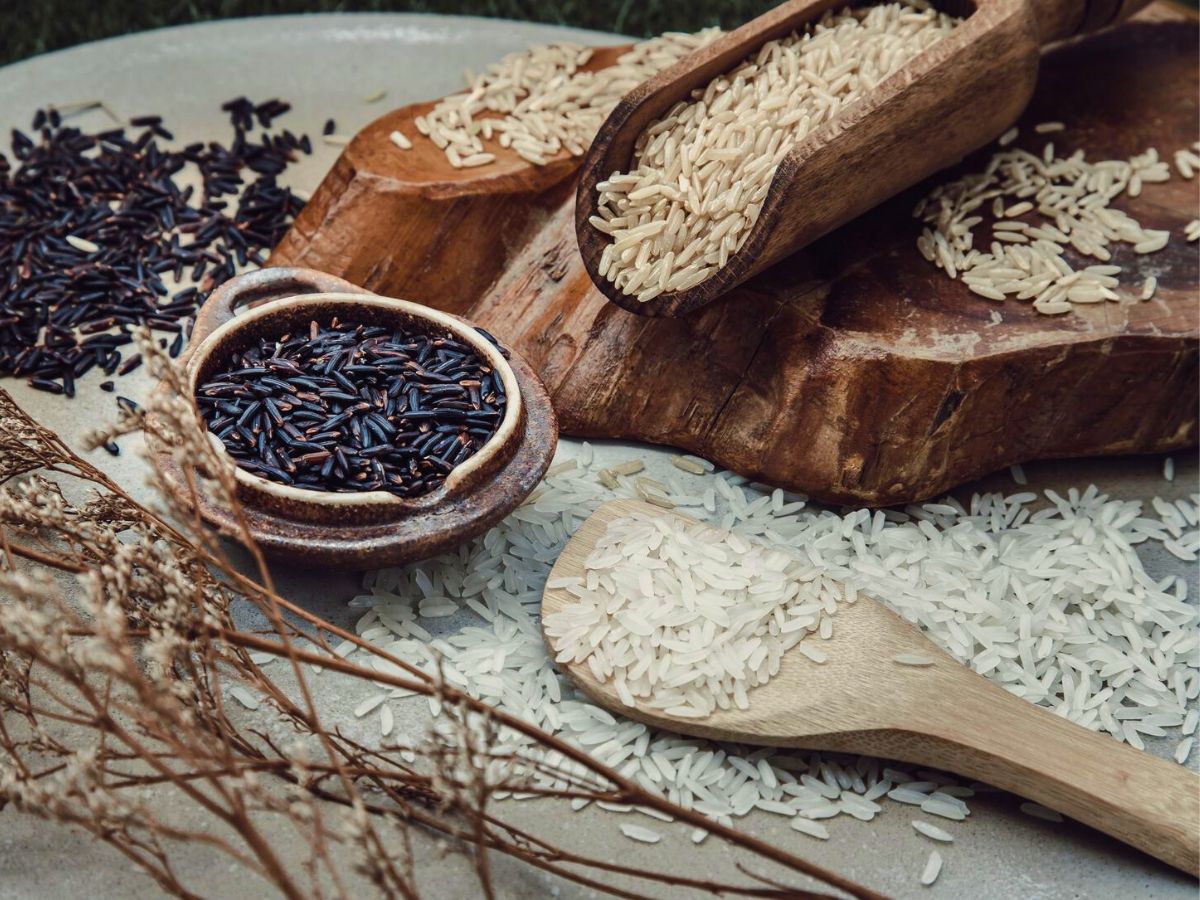







Who knew that a simple staple like rice could have so many varieties? Let’s explore the most common types of rice used in the United States so you can pick the right grain for each dish you prepare.
The information provided on this site is based on my personal experience living with alpha-gal syndrome. I consistently cite and link to expert sources, but nothing published on this site should be perceived as medical advice.
Alpha-gal sensitivities vary by person. You should understand your dietary restrictions, making any adjustments needed, and directing any questions to your physician.
My first attempt at making risotto was a total disaster. I naively grabbed the basmati rice from my pantry, clueless that using the wrong type of rice would lead to culinary chaos. As it turns out, long-grained basmati is no substitute for the short, starchy variety needed for risotto. Instead of the creamy, slightly chewy texture I’d imagined, my rice dish was underwhelming. Rookie mistake! This guide will help you navigate the wide world of grains so you can always pick the perfect rice for mealtime magic.
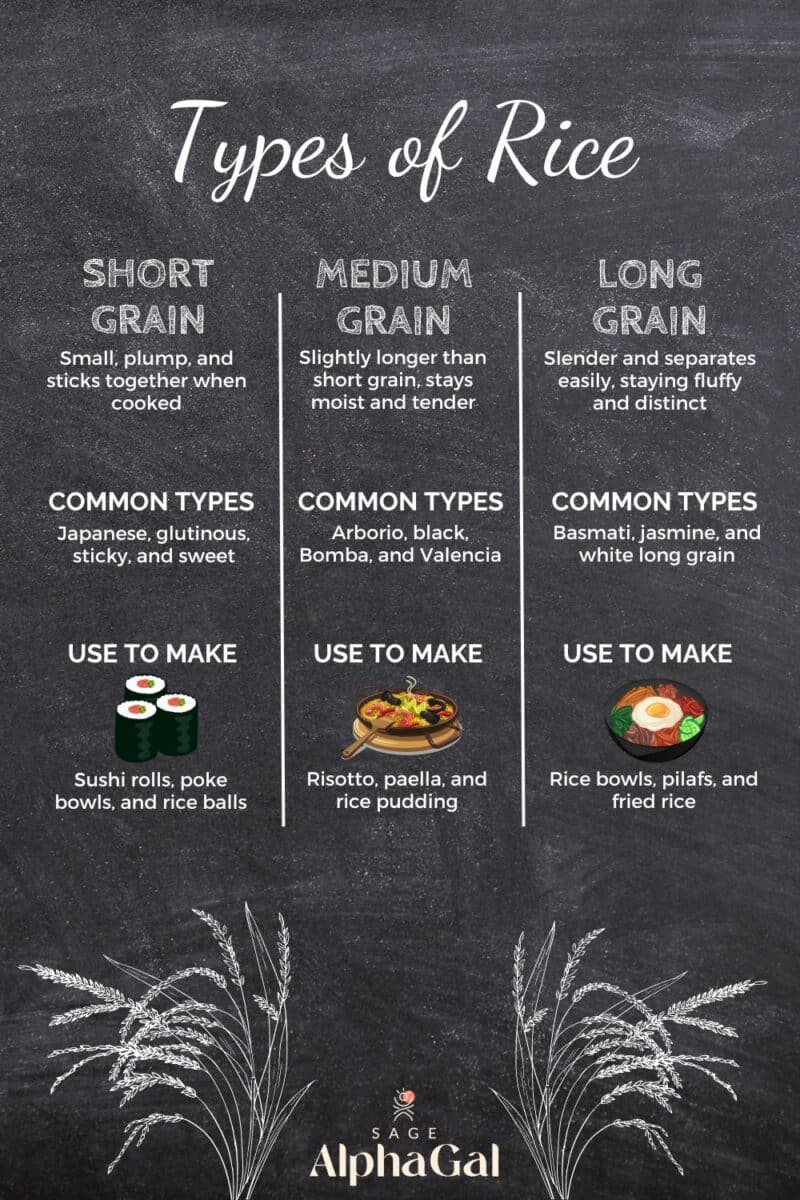
To help offset the costs of running SageAlphaGal.com, you’ll find affiliate links lightly sprinkled throughout the site. If you choose to make a purchase via one of these links, there’s no additional cost to you, but I’ll earn a teeny tiny commission. You can read all of the legal blah blah blah (as my little niece says) on the full disclosure page.
In This Article
How Many Types of Rice Are There?
Have you ever stood in the grocery store aisle and wondered how many types of rice there are? Brace yourself because there are a lot more than you might expect! According to The Rice Association, there are over 40,000 cultivated types of rice. However, here in the United States, Rice says there are more than 120,000 varieties.
Understanding the options, from slender-grained Basmati to plump Japonica, is an important part of perfecting your meals. This guide boils down the daunting number of rice varieties, helping you choose the best option for every dish.
Common Types of Rice
The plethora of rice varieties can be overwhelming, but memorizing them is unnecessary. This list highlights the most frequently used kinds of rice, their ideal culinary uses, and some delicious recipe options to experiment with in your kitchen.
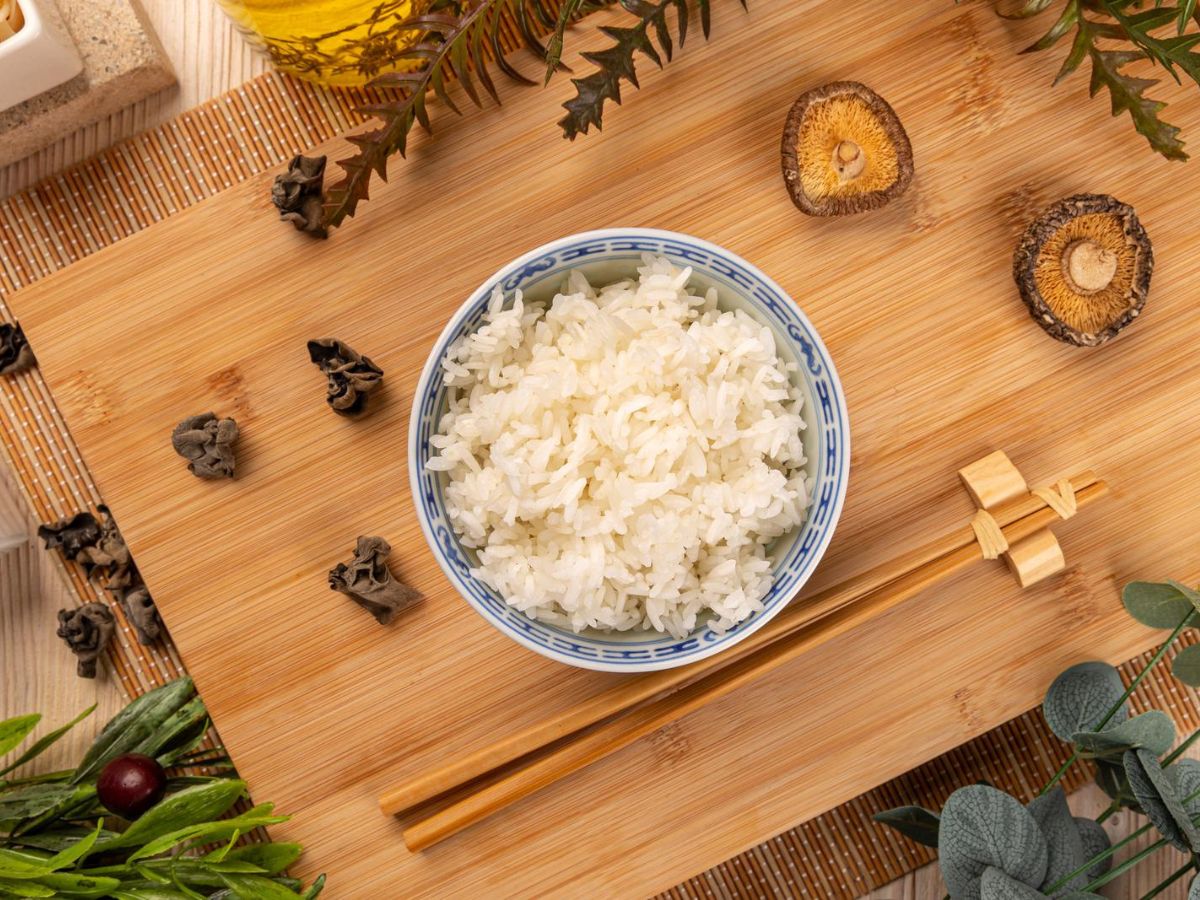
Basmati Rice
Basmati is a long-grain white rice renowned for its mild, delicate flavor and distinct floral aroma. Basmati rice comes in both white and brown varieties. Traditionally cultivated in the Himalayan foothills, it is a staple in Indian and Pakistani dishes like biryani, kheer, and chicken saag.
Basmati grains are long and slim. They can triple in length when cooked and are known for remaining slender and separate, making them ideal for stuffing, rice salads, and rice-based desserts like the traditional arroz con leche.
Soaking basmati rice for 30 minutes before cooking is recommended to enhance its flavor and reduce cooking time by 20%. This variety, including the U.S.-grown Texmati, is perfect for absorbing flavors in sweet and savory dishes, making it a versatile choice for many recipes.
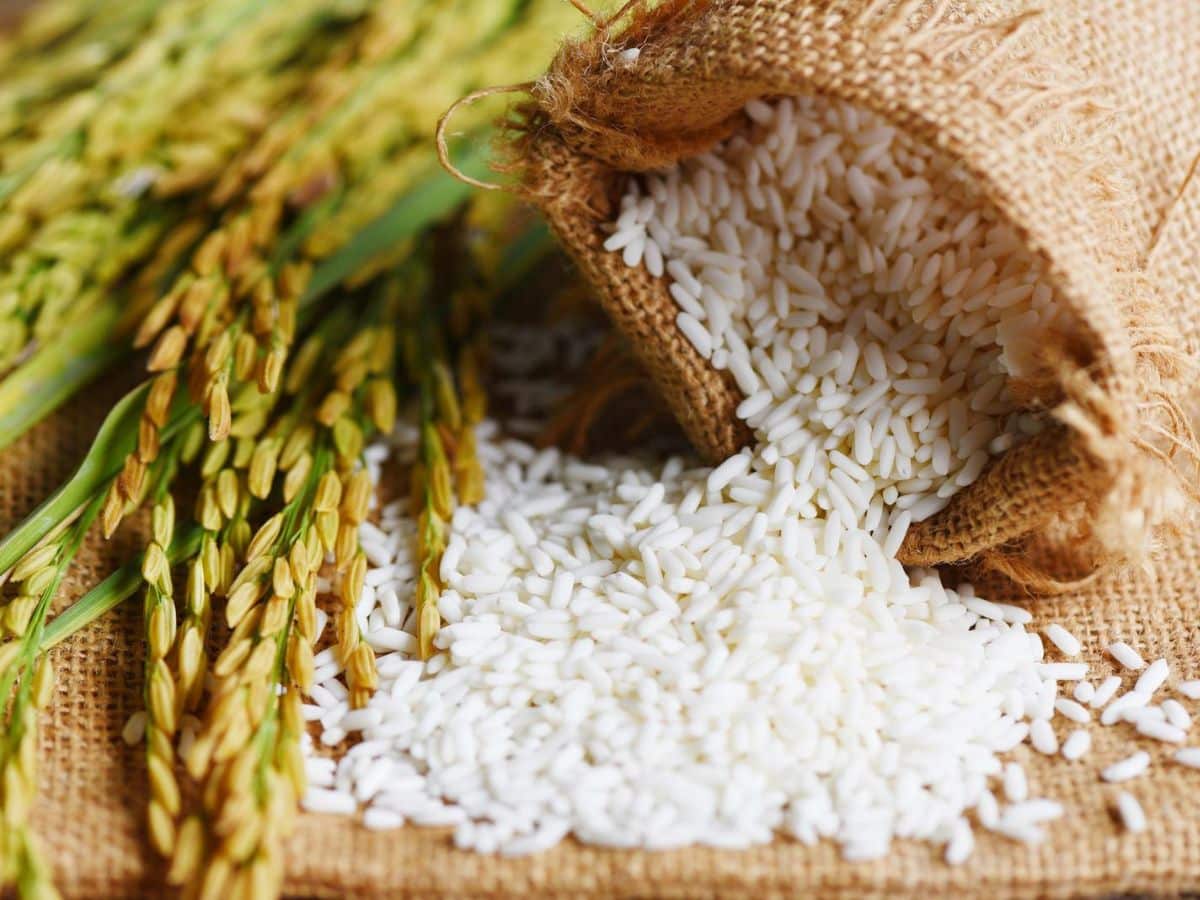
Jasmine Rice
Like basmati, jasmine rice is a popular long-grain variety grown primarily in Thailand and Cambodia. It lends itself well to Thai and Southeast Asian dishes. This aromatic rice has a slightly nutty flavor with a floral scent that gives it its name.
While the grains are slightly shorter than basmati rice, jasmine rice is versatile enough to be used interchangeably in recipes. This rice cooks up moist with a soft texture, making it perfect for dishes that pair well with its distinct flavors, such as coconut rice or a chicken and rice casserole. Available in both white and brown varieties, jasmine rice is commonly used as a side for meats, fish, and stir-fries and is a key ingredient in dishes like rice pilaf, rice salad, and fried rice.
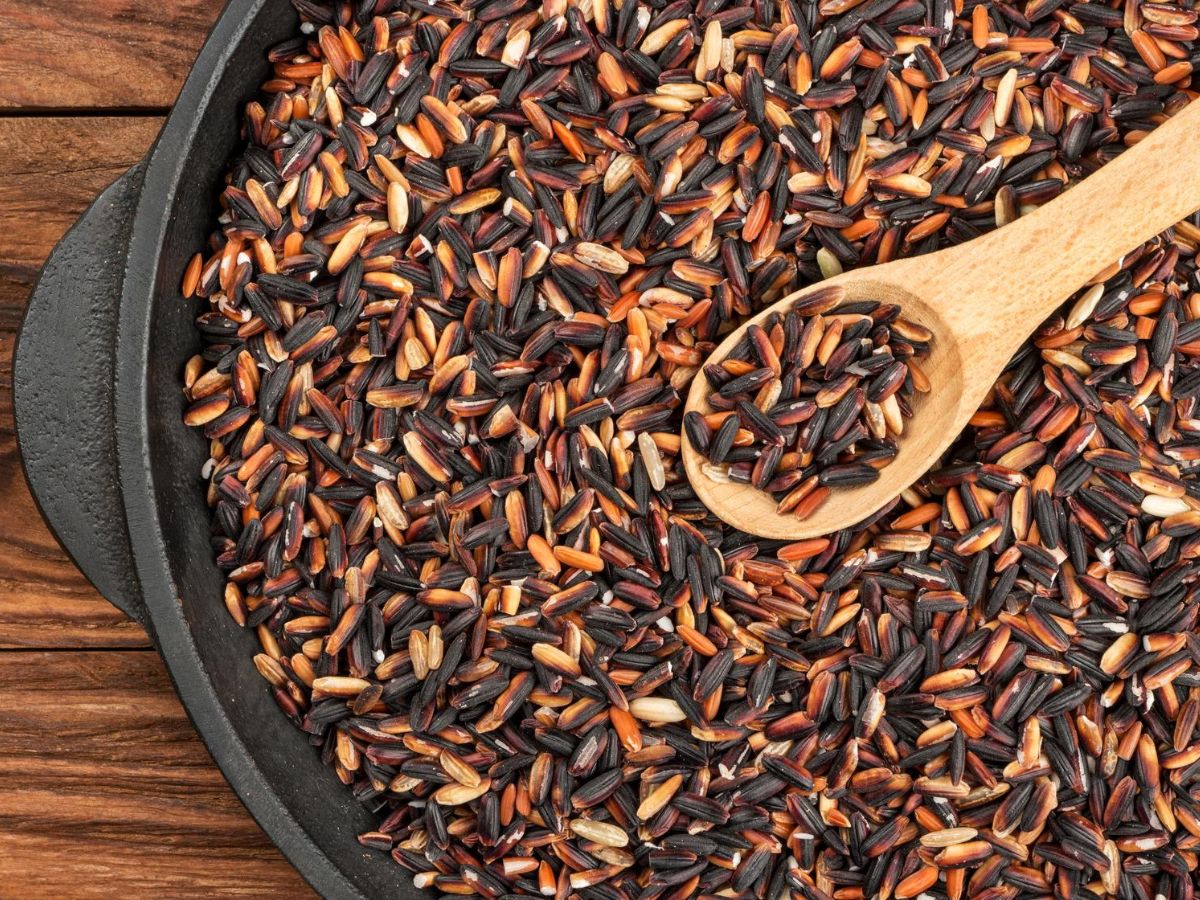
Wild Rice
Contrary to its name, wild rice is not actually rice. Instead, it’s the seed of a semi-aquatic grass typically found in the shallow waters of lakes and slow-flowing streams across North America, including the Great Lakes region and parts of Canada. Distinguished by a chewy outer sheath and tender inner grain, wild rice is rich in protein and fiber and has a low glycemic index.
Available in varieties such as Northern wild rice, Texas wild rice, and Manchurian wild rice, this is a good option for side dishes, salads, soups, and stuffing. Wild rice lends a nutty, earthy flavor to dishes, but cooking it requires patience. It’s a tough seed that absorbs water slowly and can take up to an hour to cook thoroughly.
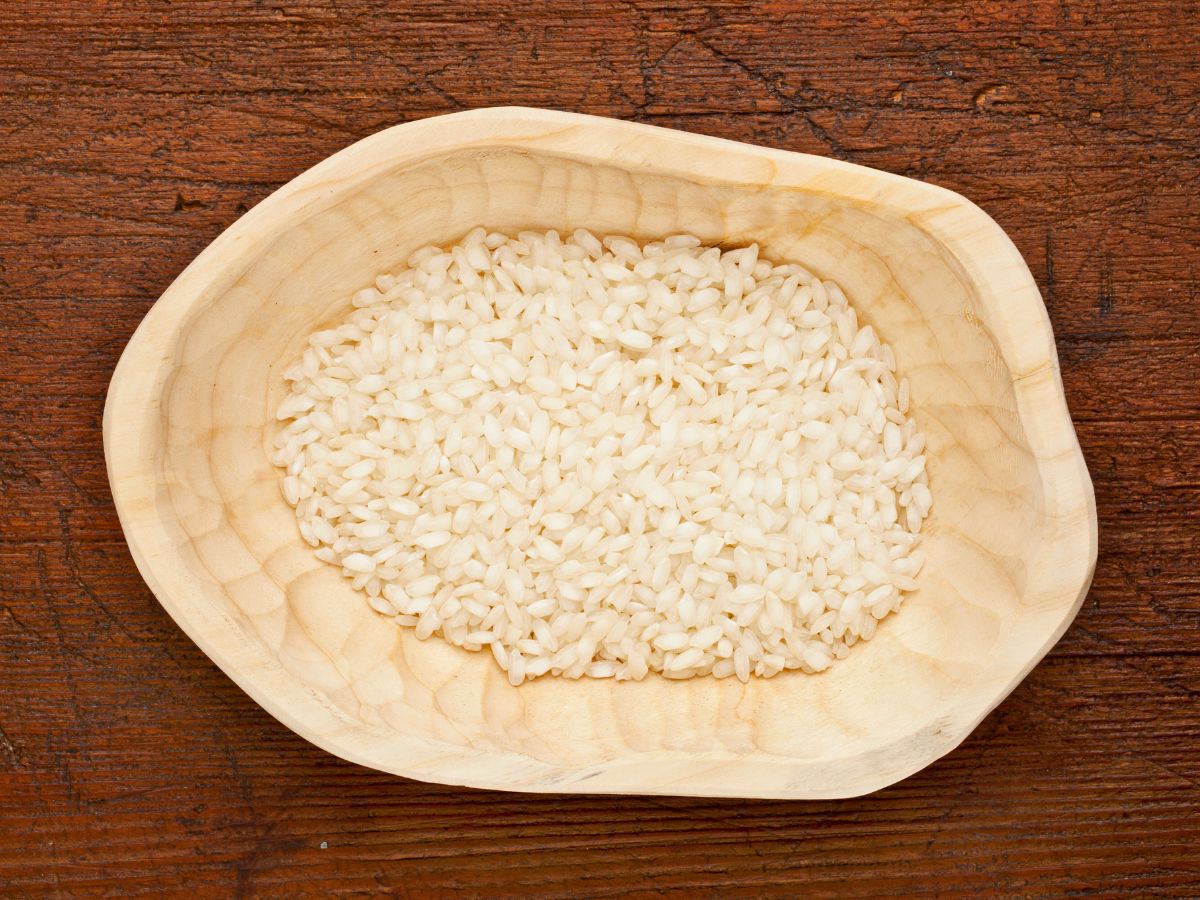
Arborio Rice
This Italian short-grain rice and its companion, carnaroli rice, are best known for making Italian risottos, although they’re perfect for rice pudding, too. Thanks to its high starch content, this short and stubby rice variety offers a luxuriously creamy consistency when cooked.
Cooking arborio rice is a bit of an art. You’ll want to add liquid slowly and cook it just enough to keep it al dente. It’s a bit of a wait but, worth it for that creamy, decadent bite.
Sage Advice: Don’t rinse arborio or carnaroli rice before cooking. You need those starches for velvety risotto.
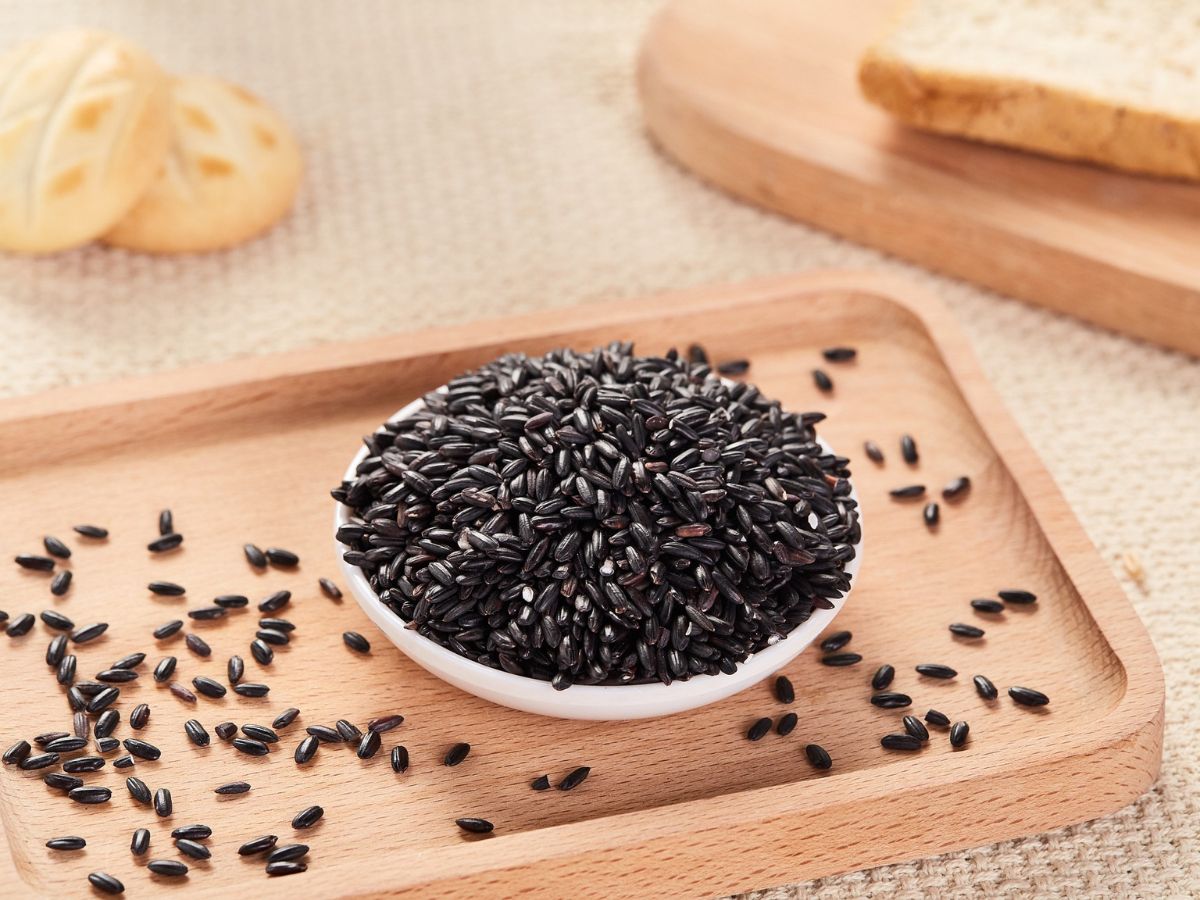
Black Rice
Although it looks similar to wild rice, black rice is a unique variety of rice. Also known as forbidden rice, it gets its signature dark purple color from anthocyanin, the same antioxidant found in blueberries and blackberries. Renowned for its high protein and iron content, black rice is almost always whole grain and delivers an earthy, nutty flavor. It typically requires about an hour to cook. Like other types of long-grain rice, this variety works wonderfully in dishes like tofu and veggie bowls.
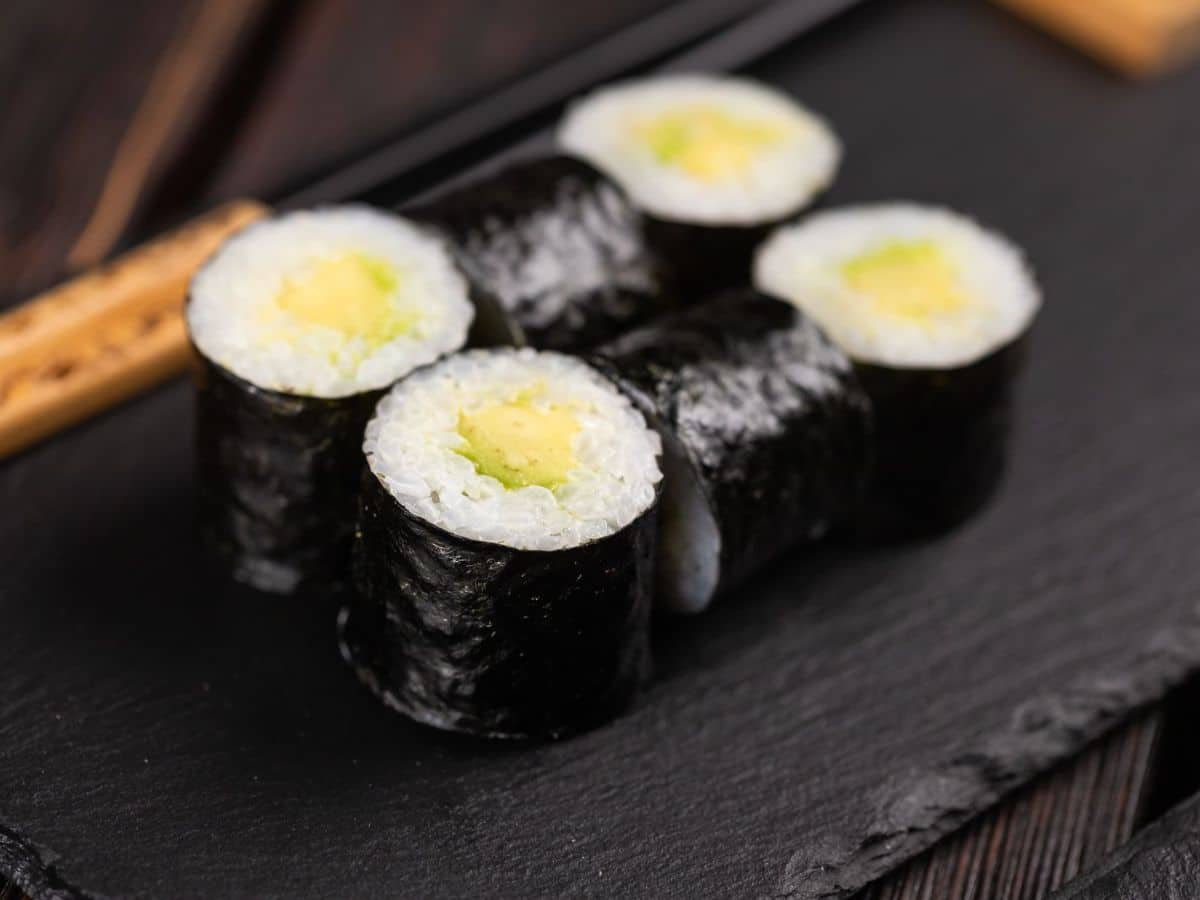
Glutinous Rice
This type of rice, known for its softness and considerable starch content, is ideal for dishes requiring a compact and sticky texture, like sushi, onigiri, and rice balls. Although glutinous rice is often used interchangeably with Japanese rice, the Japanese variety is only one type of glutinous rice; there are many others. To cook sticky rice properly, steaming it in a bamboo basket after a long soak — preferably overnight — is best.
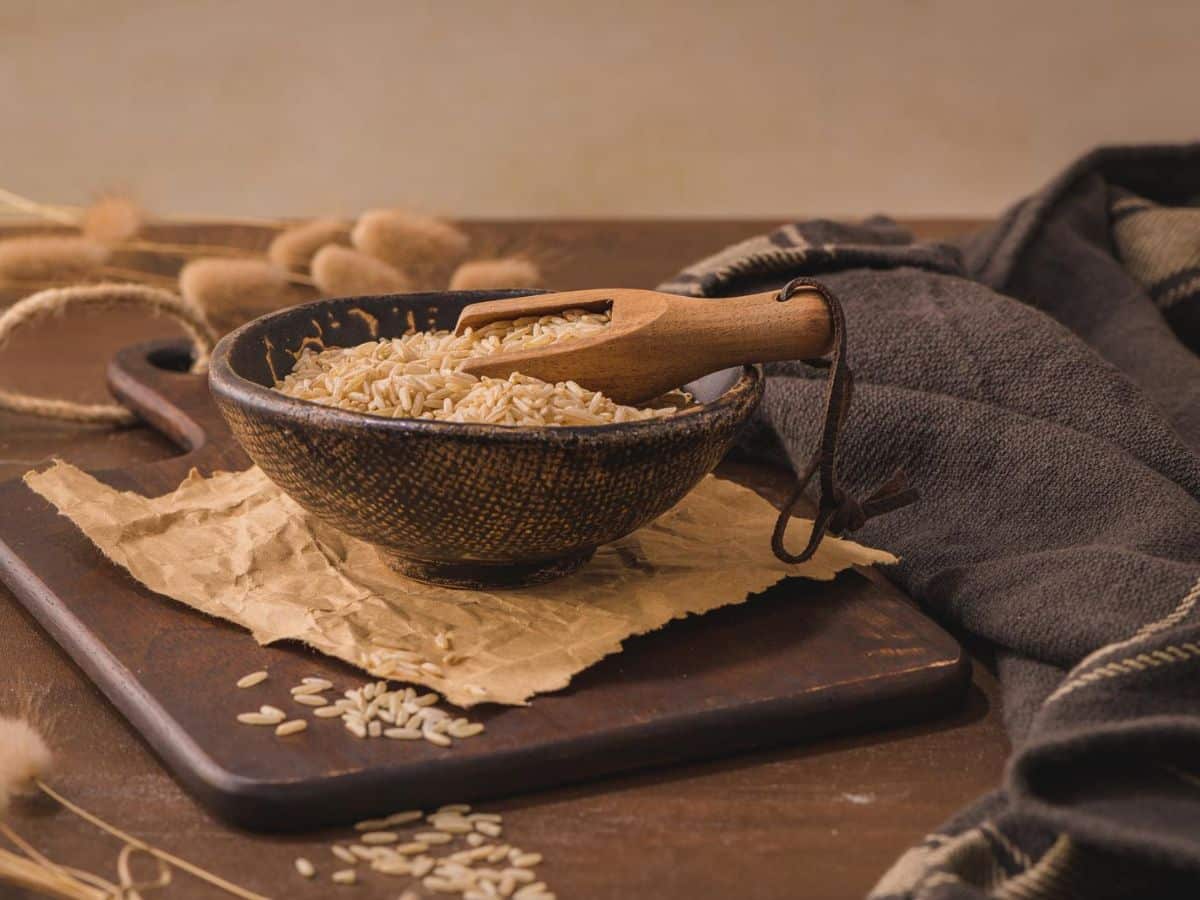
Brown Rice
Any type of rice can have a brown rice variant. It’s simply the same grain but with the outer hull intact. Because brown rice is a whole grain, it takes longer to cook than white rice. With the brown bran layer and germ intact, this rice has a hearty, nutty flavor and chewier texture.
"I love using brown rice when I cook, not only because it's higher in fiber than white rice and therefore keeps me full longer, but also because of the chewy texture. The only thing I don't love about brown rice is how long it takes to cook, so I usually keep a couple of packets of 90-second microwave brown rice in the pantry for days when I'm in a hurry."
— Anne Mauney, MPH, RD, fANNEtastic food
Beyond Basmati
When it comes to rice, there are a lot of options beyond basmati. From fluffy jasmine rice to exotic black rice, there’s a variety for any occasion. Whether making a creamy risotto or serving with your favorite curry, this guide will help you identify the perfect rice for your dish.
Frequently Asked Questions About Types of Rice
Even if you’re a risotto master or sushi savant, picking the right rice can be confusing as heck. Here are the answers to your biggest questions about rice.
What is the healthiest type of rice?
If you’re looking for the healthiest option, select unrefined brown rice. Its whole-grain goodness retains the bran and germ, offering more fiber, vitamins, and minerals than its polished pals. Black rice, also known as forbidden rice, is another healthy choice due to its high anthocyanin, an antioxidant also found in similarly purple colored foods like blueberries and red cabbage.
Do you have to wash rice before cooking it?
Washing rice removes excess starch that can leave you with a gloppy, gummy mess. As a general rule, you’ll want to rinse your rice before cooking. However, be sure to skip this step if you are using arborio or carnaroli rice. You’ll need that starch to create the texture you want in creamy risotto. You’ll also want to skip the rinse if you’re using enriched rice. Otherwise, you’ll likely wash the added vitamins and minerals down the drain.
What is converted rice?
Converted rice, or parboiled rice, is pre-steamed to lock in nutrients and alter the starch. The result? A firmer, fluffier rice that’s less likely to turn mushy when cooked.
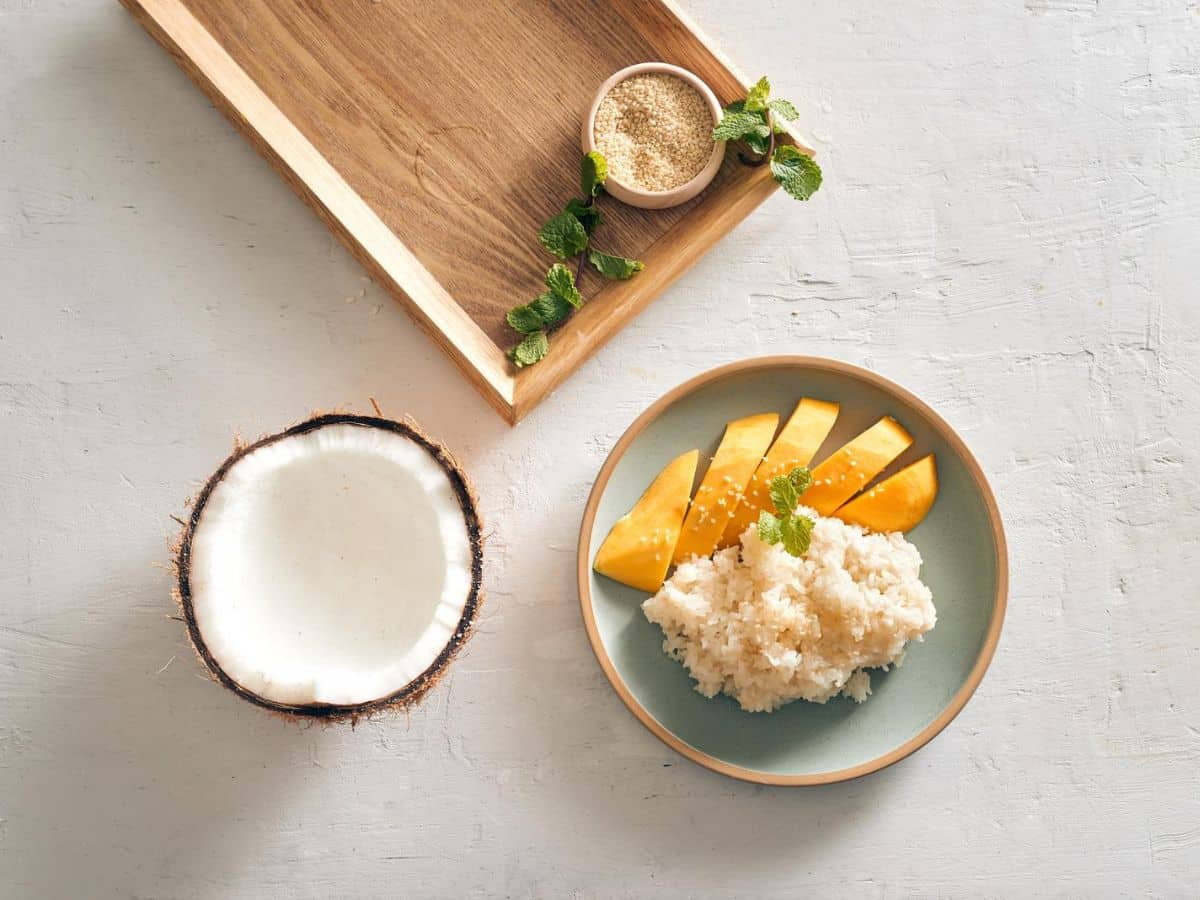
What type of rice is sticky rice?
Sticky rice, also known as glutinous rice or sweet rice, isn’t just for dessert. Despite its name, it contains no gluten. It’s all about the stickiness that makes everything from delicious Asian sweets to savory dishes like sushi a sticky delight.
What type of rice is sushi rice?
Sushi rice is a type of short-grain rice known for its ability to be wonderfully sticky and yet distinctly separate each grain. It’s seasoned with a mix of vinegar, sugar, and salt, crafting the perfect base for your favorite sushi rolls.
What type of rice is used for risotto?
When making a pot of risotto, arborio rice is your best bet. This Italian short-grain rice is famous for releasing its starch while cooking, giving risotto its signature creamy texture.
What type of rice is best for fried rice?
Long-grain rice like jasmine or basmati is ideal for fried rice. Its lower starch content and firmer texture make it perfect for achieving that delightful separation and crispiness in your fried rice.
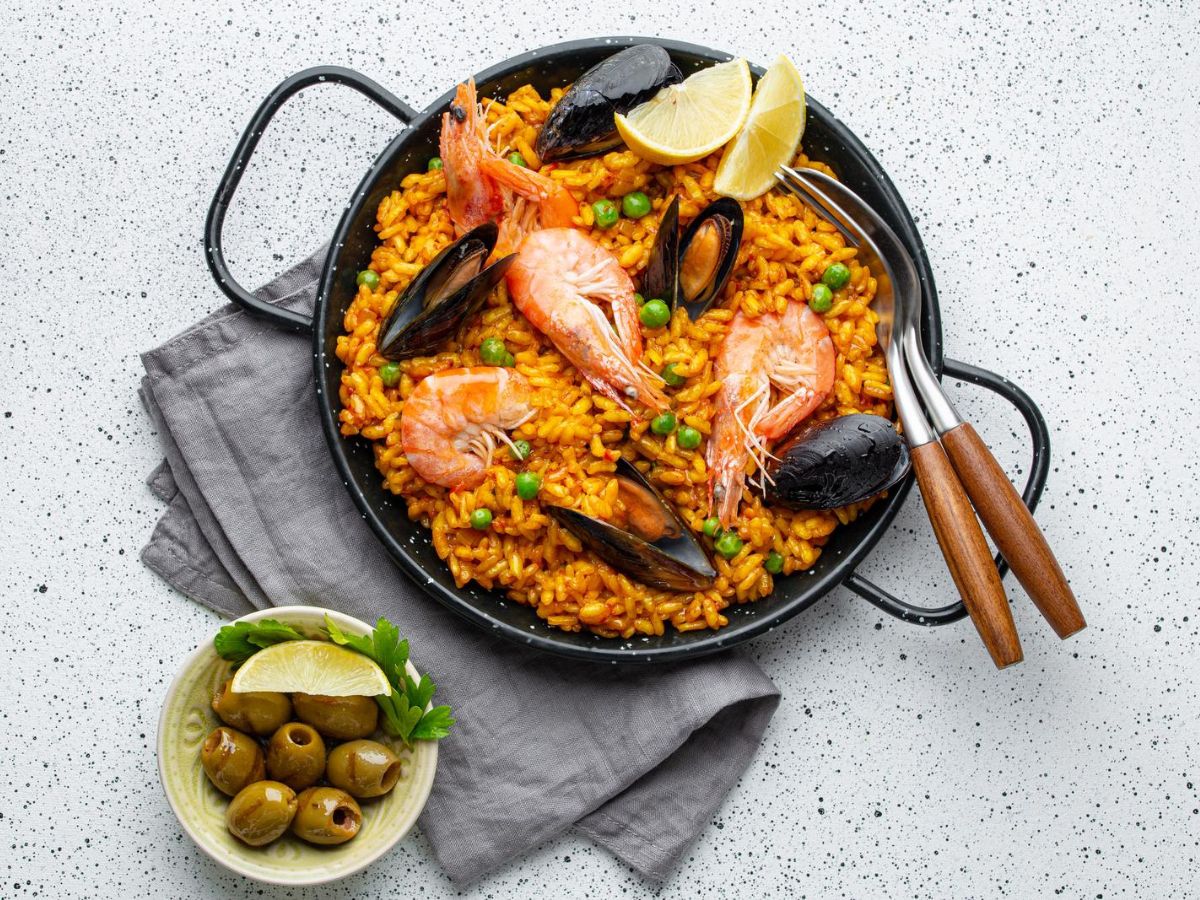
What type of rice is best for paella?
When you want to whip up authentic Paella, reach for Bomba or Valencia rice. These Spanish varieties are champs at absorbing all those glorious flavors without turning mushy.
Portions of this article originally appeared on Food Drink Life.
Thank you for sharing!

